#LeatherRepair
Explore tagged Tumblr posts
Text
Our History: A Legacy of Excellence in Leather Care
Since its founding in 2017, Furniture Laundry has been dedicated to mastering the art of leather care. Specializing in cleaning, restoring, dyeing, and repairing high-end leather furniture, we have built a reputation for excellence and precision.
Our Journey From the beginning, our focus has been on understanding the unique nuances of leather. Over the years, we have perfected our techniques and adopted state-of-the-art technologies to deliver unmatched results. This commitment to innovation and craftsmanship has made us the trusted choice for homeowners, businesses, and designers alike.
Why Trust Us?
Expertise: Decades of experience in leather care ensure flawless results.
Advanced Techniques: We combine traditional craftsmanship with modern technology.
Worry-Free Maintenance: Our services are designed to keep your leather furniture stunning and durable for years.
Timeless Elegance, Delivered At Furniture Laundry, we don’t just care for leather—we transform it. Whether it’s restoring a vintage sofa or refreshing a modern piece, we bring timeless elegance to every project.
#LeatherCare#FurnitureRestoration#LeatherRepair#TimelessElegance#FurnitureLaundry#Craftsmanship#LuxuryFurniture#HomeMaintenance#EcoFriendlySolutions
0 notes
Text

Why Owning a Leather Repair Franchise is a Smart Investment
If you’re looking to start your own business but want to minimise risk while maximising returns, investing in a leather repair franchise could be the perfect solution. The demand for leather restoration is continuously growing, making it a highly lucrative industry with multiple revenue streams. From furniture and automotive interiors to luxury handbags and antiques, the market for professional leather repair services is vast and diverse.
A Proven Business Model with Instant Success
Unlike starting a business from scratch, investing in a franchise means you’re stepping into a well-established brand with a proven track record. The hard work of building brand awareness, developing effective marketing strategies, and gaining industry credibility has already been done. As a franchisee, you benefit from instant brand recognition, giving you a head start over independent businesses.
This means that instead of spending years trying to establish a name in the market, you can begin generating income immediately. With an existing customer base and a trusted reputation, your business is already positioned for success from day one.
Low Risk, High Returns
Starting a business from scratch comes with uncertainties—will there be enough demand? How will you market your services? What if the business doesn’t take off? A franchise eliminates these risks. The business model has already been refined, so you don’t have to experiment with what works and what doesn’t. You are given a clear roadmap to success, significantly reducing the likelihood of failure.
A leather repair franchise is also a recession-resistant investment. In economic downturns, people look to restore and repair rather than replace expensive leather goods. This ensures a steady stream of customers, making it a secure and profitable business venture.
Comprehensive Training & Ongoing Support
One of the biggest advantages of owning a franchise is the support system. You don’t need to be an expert in leather restoration to get started—comprehensive training is provided, covering everything from repair techniques to customer service and business management.
Additionally, ongoing support is available whenever you need it. Whether it’s technical advice, business guidance, or marketing assistance, you have an entire network of experts ready to help. This level of support is invaluable, ensuring that even if challenges arise, you’re never left figuring things out alone.
Scalability & Flexibility
A leather repair franchise is highly scalable—you can start as a one-person operation and expand as demand grows. Whether you prefer a mobile service, a home-based business, or a dedicated workshop, the flexibility allows you to structure your business in a way that suits your lifestyle.
With unlimited earning potential, how much you make is entirely up to you. The more effort you put in, the greater your financial rewards.
Final Thoughts
Investing in a leather repair franchise is one of the smartest business decisions you can make. It offers the perfect balance of low risk and high reward, with the security of a well-established brand and the freedom to be your own boss. With instant credibility, expert training, ongoing support, and a growing market, this is an opportunity that offers long-term success and financial independence.
If you’re looking for a business that provides stability, flexibility, and substantial earning potential, a leather repair franchise could be your ideal investment. Now is the time to take control of your future and step into a business that’s built for success.
#franchise#leather repairs#leatherrepair#leather renovation#leather restoration#leather#leather fashion#business growth#businessgrowth#business#leathercare
0 notes
Text

Best leather repair service in the UK
#leathercleaning#LeatherRepair#LeatherExperts#RestorationSpecialists#ReviveYourLeather#QualityCraftsmanship
0 notes
Text
Leather Conditioner: The Perfect Gift for Any Professional

Leather Conditioners: Makes the perfect gift for any professional, Leather conditioner maintains and protects leather goods such as furniture, clothing, bags, and shoes. It helps moisturize and nourish the leather, protecting it from drying out and cracking.
Buy Now: https://leatherhero.com.au/collections/conditioners
0 notes
Text
Preserving Elegance: Unveiling the Secrets of the Best Leather Cleaner and Expert Leather Handbag Repair
Leather, with its timeless allure and undeniable sophistication, deserves meticulous care to retain its luster and longevity. Without A Trace emerges as the go-to destination for those seeking the pinnacle of leather care, offering the best leather cleaner and unrivaled expertise in leather handbag repair. Let's delve into the realm of exquisite leather care,
Where precision meets passion, and discover the transformative power of professional services.
The Best Leather Cleaner: Elevating Leather Care to Perfection
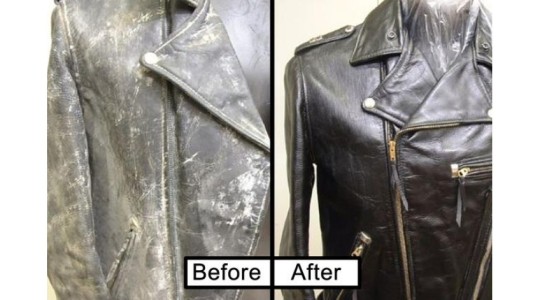
Leather, being a natural material, requires a delicate touch when it comes to cleaning. Without A Trace proudly presents the best leather cleaner, a solution crafted with precision to cater to the diverse needs of leather aficionados. Our cleaning process transcends the ordinary, focusing on not just surface cleanliness but a comprehensive restoration of the leather's natural beauty.
The journey begins with a meticulous assessment of your leather item, be it a sofa, jacket, or handbag. This step is crucial in identifying the type of leather and any specific concerns that need attention. Our expert technicians then employ a specially formulated cleaner designed to gently lift away dirt, oils, and impurities without compromising the leather's integrity.
What sets our leather cleaner apart is its ability to nourish the leather, preserving its natural oils and suppleness. The result is a rejuvenated leather item that not only looks pristine but also enjoys an extended lifespan. Choosing the best leather cleaner from Without a Trace means choosing a commitment to excellence in leather care.
Leather Handbag Repair: A Symphony of Skill and Craftsmanship
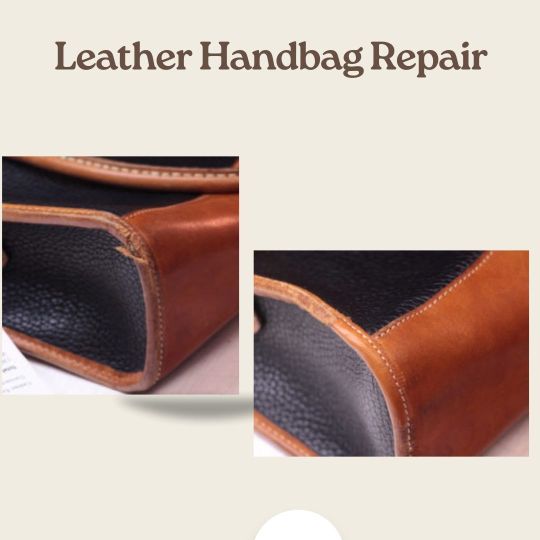
Leather handbags, often more than a mere accessory, are a statement of style and sophistication. When wear and tear inevitably make their mark, entrusting your cherished handbag to Without A Trace ensures a seamless blend of skill and craftsmanship in leather handbag repair.
Our artisans approach each handbag repair with the utmost care, understanding that these items hold sentimental and aesthetic value. From minor scuffs to more significant issues like tears or hardware damage, our experts employ industry-approved techniques to restore your handbag to its former glory.
The process involves a detailed assessment to identify the extent of damage and formulate a tailored repair plan. We use high-quality materials that match the original specifications of your handbag, ensuring a flawless result that surpasses expectations. The goal is not just to repair but to revive the essence of your leather handbag, preserving its elegance and charm.
Why Without A Trace Excels in Leather Care:
Without AOU Trace stands out as a beacon of excellence in leather care for several reasons. Our commitment to customer satisfaction is reflected in transparent communication, ensuring you are informed at every stage of the process. We prioritize precision and quality craftsmanship, and our team comprises skilled artisans who approach each task with passion and expertise.
The trust bestowed upon us by clients seeking the best leather cleaner and unparalleled leather handbag repair is a testament to our dedication to excellence. At Without A Trace, we understand that leather care is not just a service; it's an art form, and we take pride in being masters of this craft.
In conclusion, when it comes to preserving the elegance of your leather possessions, Without A Trace is the epitome of excellence. Experience the transformative power of the best leather cleaner and the skillful touch of expert leather handbag repair. Contact Without A Trace today to embark on a journey of unrivaled leather care that exceeds expectations.
#LeatherCare#HandbagRestoration#LeatherRepair#BagRehab#HandbagRejuvenation#RestoreWithLove#LeatherMaintenance#BagRevival
0 notes
Text
The antique chair restoration project—part 8
So, this is it! I think it’s finally done at last.
I’ve been working on it, but not posting about it, so let me bring this series up to date!
There were a couple of ever so slightly loose joints in the frame, so I whacked them apart with a mallet just enough to get a little bit of hide glue into them. Probably needn’t have bothered, but IME a loose joint just gets looser, and then loosens other things, so may as well nip it in the bud, right? Yeah. Isn’t this a gorgeous bit of joinery? I doubt these tight-fitting joints even needed glue to begin with, but after 150 years (at least…I’m not sure of age, but I’m going with Victorian for my best guess), wood can be expected to shrink a little.
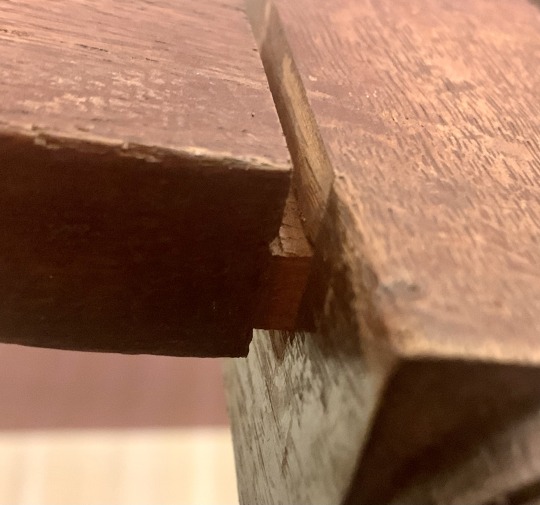
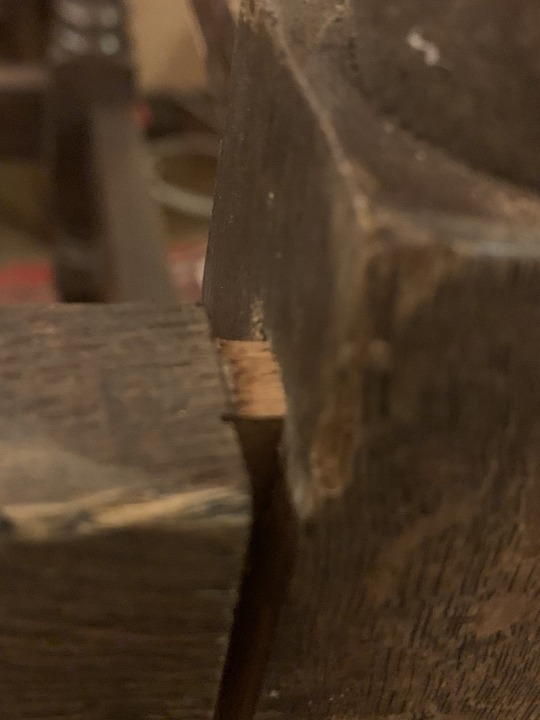
I gave it a few coats of shellac, followed by some paste wax polish, because the original finish was badly worn to nonexistent in places and I wanted to protect the wood. Obviously I left the lovely patina alone though! I did have to glue a few splintery bits back down, and fill a few woodworm and knot holes, but not much work was needed on the frame (apart from the tacking rail, that is).
The upholstery was straightforward. I would have liked to use tacks throughout to stay in keeping with the era in which the chair was made, but the tacking rail was in pretty bad shape, and is less than an inch thick (much of that being riddled with holes from previous tacks). I filled all the damage, but decided to do the webbing with tacks and the rest with staples to be kinder and gentler to the frame (much smaller holes and fewer and less violent impacts).
Webbing. (I used copper tacks to attach it, just because removing the incredibly rusty steel ones was such a royal pain in the arse, and I wouldn’t knowingly inflict that on any future person!) Obviously the quality control department had to be involved for this.

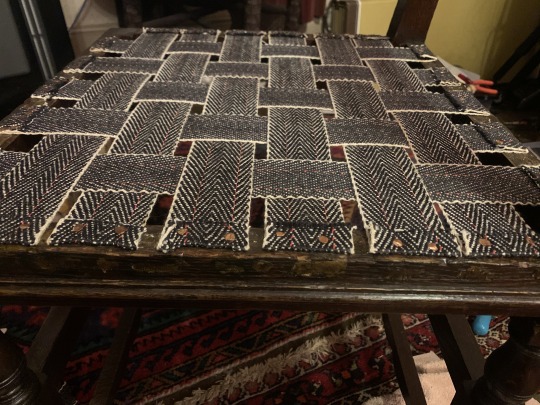
This is overkill, I know, but I do not want this seat to sag and cause the leather to split again! That would really piss me off. So, overkill it is! It’s not going anywhere. Here’s the hessian foundation. This seat is really shallow, and I’m constrained to the original proportions by the leather cover, so I’m just going to do one layer of hessian with an integral edge roll (stuffed with horsehair), and then stitch around that to create a very firm and defined square edge profile.

I forgot to take a photo when I was sewing in the bridle loops to hold the hair, but I did take one after putting in the horsehair:

Edge stitching:

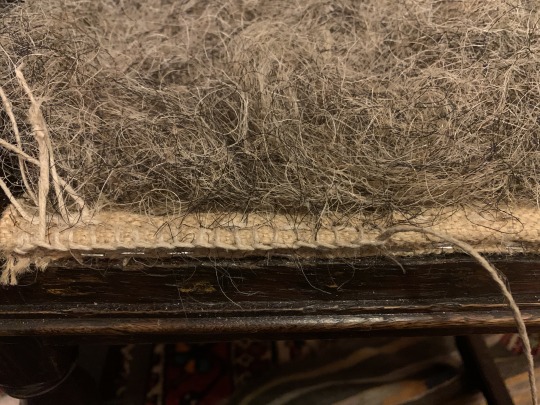
I think I ended up stitching around it three times.
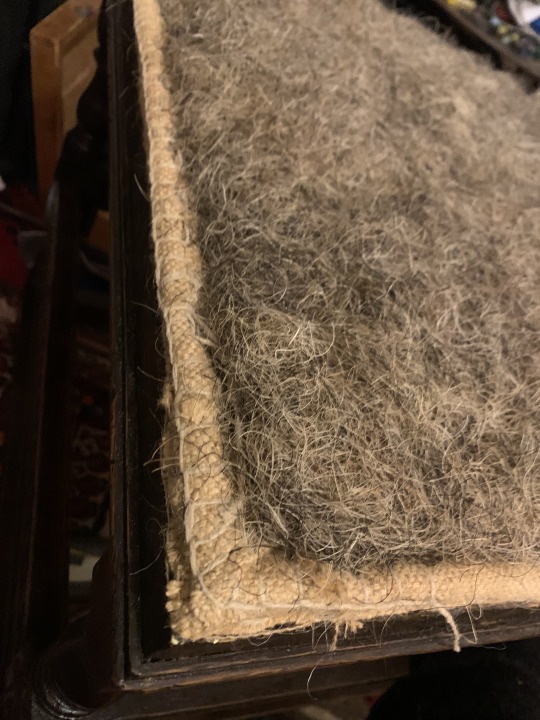
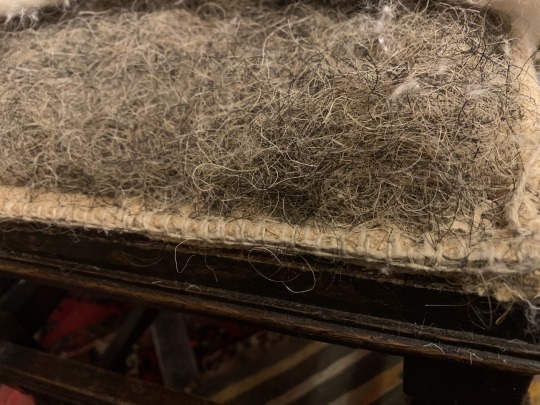
Then some cotton and wool wadding:
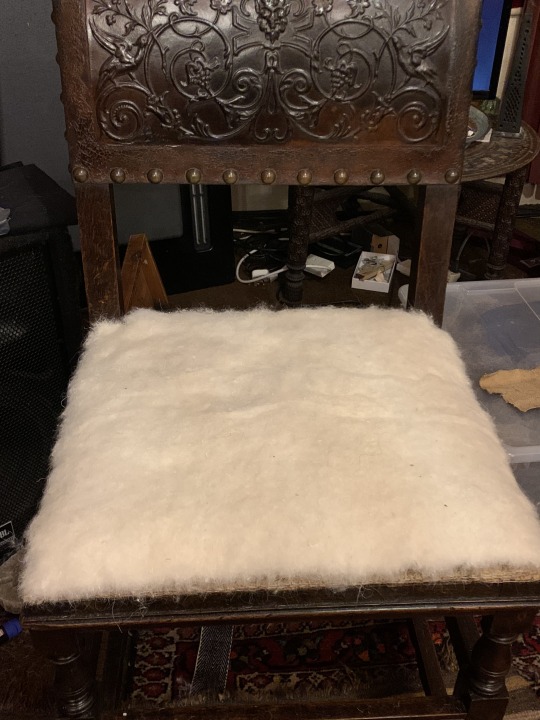
Then calico stretched over tightly:

And finally the leather cover:

I fastened it down first with a few tacks, and then started to put in the brass nails. Unfortunately more of them broke in the process (only the heads are brass, and the steel parts were badly rusted and quite fragile). So I found some in my stash that were close to the same size (there were actually two different kinds on it, so who knows what is original anyway), and set about faux-patinating them with vinegar and salt so they didn’t look silly next to the old ones. They’re not as dark as I’d like, but I’m in a hurry to finish this up and don’t want to have to order any specialist patina solution for brass (the ones I have are for silver, and are not very effective on brass). It’ll be fine. They’ll continue to darken with time.

I did a bit more faux painting to perfect the look of the seat:
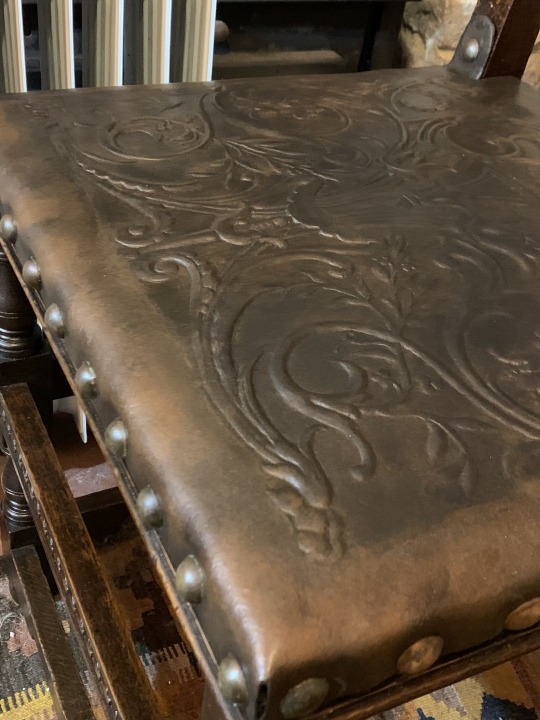
I couldn’t resist trying it out at this point. The seat is very comfortable and very firm! No sagging is remotely likely for the foreseeable future.
I wrote up an account of what I did, and tucked it into the webbing underneath with one of my cards, in case a future person takes the seat apart again someday.

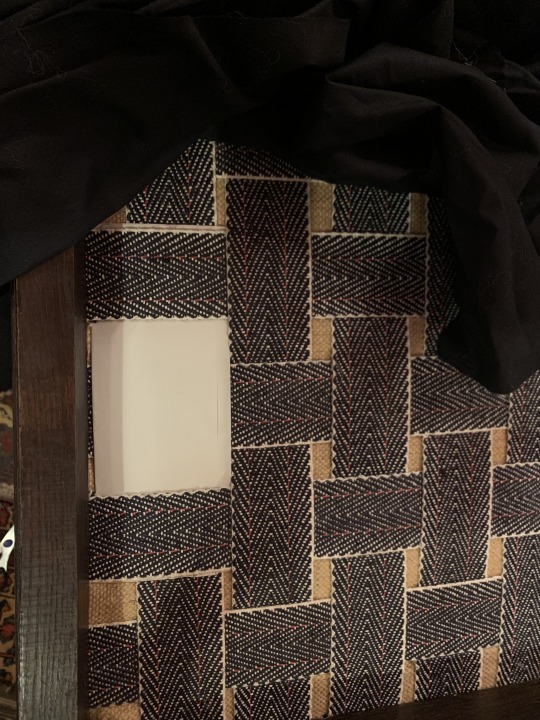
Finally the bottoming cloth went on.
I did a bit more painting on the seat once it was in place, to emphasise areas of “wear” and “fading” and make it look more authentic.

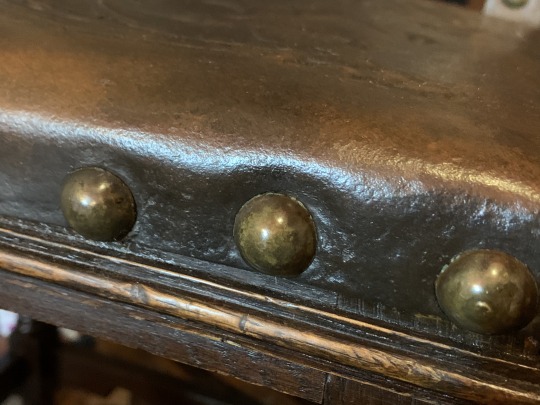
Next I gave the leather a few coats of Renaissance Wax to polish it and protect it.
A few of the cracks have become visible again now that the leather seat cover has been under tension for a couple days, but it is light surface cracking only, and I’m confident my repairs are structurally sound, strong, and will be fine. I will let it all settle for a few months and then re-fill the surface cracks with some flexible filler to make them invisible again, but there’s no point in doing that until the newly stretched leather has settled in for a while and been used (sat on).

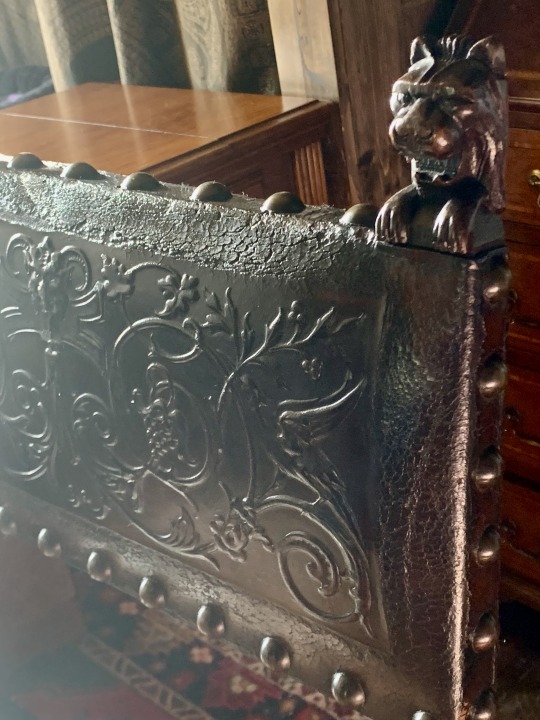

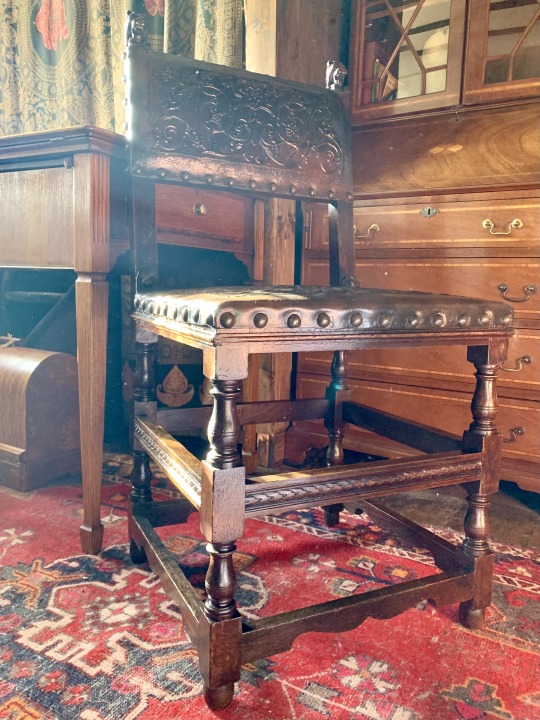
All in all, I’m very pleased with the result!
#Antiques#AntiqueChair#AntiqueFurniture#restoration#AntiqueRestoration#LeatherChair#EmbossedLeather#AntiqueChairRestorationProject#LeatherRepair#LeatherDye#LeatherPaint#AntiqueFinish#LeatherAndOakChair#upholstery#TraditionalUpholstery#horsehair
1 note
·
View note
Text
0 notes
Photo

Best Leather Repair Patch Tape Kit for Furniture & Cars US? #LeatherRepair #HomeImprovement #DIYFixes #FurnitureRestoration ... Link: https://mymetric360.com/question/best-leather-repair-patch-tape-kit-for-furniture-cars-us/?feed_id=269658&_unique_id=670ea08ea53a9
0 notes
Video
youtube
Creating a Leather Finish with Deep Soaking Method 🛋️ #leatherrepair #le...
#youtube#leather dye repair#leather#leather repair#furniture makeover#furniture flip#home decor#home remedies#interior design#leather repair kit
0 notes
Text

Let us fix your stuff. Torn pockets, broken zippers, beat up boots, broken straps, loose snaps, missing studs, blown out pockets - whether it's ripped, missing, or broken - we can fix it (most likely). Bring it in and let us take a look at it.
#leatherrepair #leathergoods #leatherrestoration #leathersewing #leatherwork #route66 #kingmanaz #KingmanArizona
0 notes
Text
𝐄𝐢𝐝 𝐚𝐥-𝐀𝐝𝐡𝐚 𝐌𝐮𝐛𝐚𝐫𝐚𝐤 😊 to our amazing staff, valued customers & Partners! 🌙✨🎉
May this Eid bring you and your loved ones moments of happiness, togetherness, and blessings that fill your hearts. ❤️🤲
Thank you for being an integral part of our journey.😊
Eid Mubarak to all! 🌟🌙✨
#EidAlAdha #EidMubarak #Blessings #Joy #Gratitude #Unity
eidmubarak #eidwishes #leatherrepairwishes#eidmubarak2023 #eidaladhamubarak #eidwishes #leatherzone #leatherdoctor #leatherlife #leatherrepair #leatherworks #leatherwork #leatherrestoration #sofarepair #leathercleaning #upholsterycleaning #upholstery

#eidaladha#eid mubarak#eid al Adha wishes#leatherrepairwishes#eidmubarak2023#eidaladhamubarak#blessings#Gratitude#custommadefurniture#leathercleaning#custommade#furnituredesign#sofacleaning#sofarepair#reupholstery#upholstery#furniture#upholsterycleaning
0 notes
Video
tumblr
Super proud to inform our ENGINEERED OAK WOOD flooring used for pavilion at Expo 2020. We thank dubai Expo 2020 for giving us this prestigious project.
Our Dubai Expo 2020🇦🇪 is now officially open⭐ and until 31 March 2022 can be visited ⌛... It will be once in life time experience 🚀Expo city is magnificent, lights, entertainment, hotels, restaurants, events, education, technology and so much more to explore and truly love.
#expo2020#expo2021#dubaiexpo2020#expo#upholstery services#leatherupholstery#reupholstery#leatherrestoration#leatherrepair
0 notes
Text





Building Stronger Communities Through the Detailing Summit©
The Detailing Summit© in Hull is more than just a training event—it's a transformative experience designed to bring the detailing industry together. This event is paving the way for stronger, more connected communities within the industry by offering unparalleled learning opportunities, fostering collaboration, and creating a space for personal and professional growth.
The line-up for this year's Detailing Summit is already impressive, featuring industry leaders ready to share their expertise and insights. From wet sanding and machine polishing to leather repairs, motorbike detailing, and PPF for bikes, the hands-on training sessions ensure attendees gain practical skills they can immediately apply to their businesses.
But the Detailing Summit goes beyond technical skills. Business panels provide invaluable advice on growth, marketing, and strategy, while mental health sessions offer crucial support for tackling the pressures of running a business. This holistic approach ensures attendees leave not just as better technicians, but as more confident, well-rounded business owners.
Featuring brands like RUPES, Lake Country Manufacturing, Invisible Patterns, and the IDA, the Summit showcases a collaborative spirit that sets it apart. Professionals like Adam Blackwell, Martin Sadler, and Alex Isherwood will guide attendees through cutting-edge techniques, inspiring innovation and growth.
The Detailing Summit© is about more than learning—it’s about building connections, sharing knowledge, and strengthening the detailing community. Don’t miss this chance to be part of a movement that’s uniting the industry and driving it forward.
#DetailingSummit #CommunityFirst #IndustryUnity #LearnAndGrow #HullSummit
#DetailingSummit detailing car wash leather repair#leatherrepair#leather repairs#leather restoration#leather fashion#business growth#business#businessgrowth
0 notes
Text
Transform Your Leather Items with Our Expert Repair Services!
Is your favorite leather item in need of some TLC? Look no further! Our team of leather repair experts at https://www.leathergeeks.co.uk/leather-repairs/ specializes in bringing worn-out leather back to life. Whether it's a beloved sofa, cherished handbag, or classic jacket, we have the skills and expertise to make it look as good as new. With meticulous attention to detail and top-quality materials, we ensure that your items are restored to their former glory. Don't let scratches, tears, or fades ruin your prized possessions. Trust https://www.leathergeeks.co.uk/leather-repairs/ to deliver exceptional leather repair results every time!
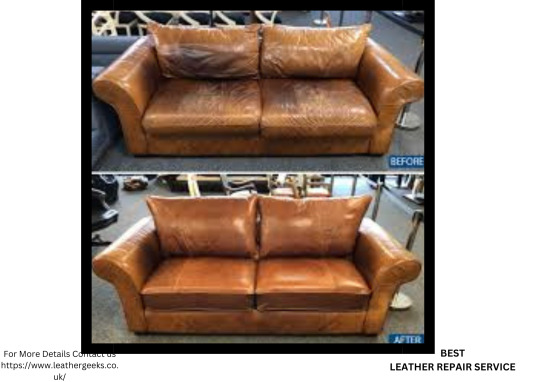
0 notes
Text
Demystifying Leather Care: Cleaning vs. Conditioning Explained
Explore the nuances of leather care with our latest blog, "Leather Cleaning vs. Leather Conditioning: What's the Difference?" Dive into the world of effective leather maintenance as we unravel the distinctions between cleaning and conditioning. Learn the importance of each process for preserving the longevity and lustre of your leather items. Trust your favourite brand, Leather Hero, as we sell leather cleaners, leather repair kits and all products online for effective leather repair. Elevate your understanding of leather care without the complexity. Read now and empower yourself with the knowledge to keep your leather looking impeccable, courtesy of Leather Hero.
Read More: https://ext-6387713.livejournal.com/800.html
1 note
·
View note
Photo

Leather Depot brings an impressive selection of leather goods for everybody in Chesterfield Township, MI. We have been servicing the Chesterfield Township area for more than 40 years with professional leather services such as leather alterations, leather repairs, leather cleaning and leather reconditioning. Our friendly and knowledgeable staff is eager to assist you with any problems you may have.
Additionally, we provide one of our county's largest sections of leather fashion and motorcycle apparel and accessories including leather jackets, motorcycle jackets, motorcycle apparel, leather apparel, leather coats, leather bags, leather conditioner, and more leather accessories.
Our family owned and operated business prides ourselves in having "US Made" products and top of the line imported brands. Our leather repairs and cleaning services are also of the highest quality and we can service most products. Contact us today if you'd like to learn more about all of our leather goods and repair services today.
https://www.chesterfieldtownshipleather.com
#Leather#LeatherGoods#LeatherJackets#MotorcycleJackets#MotorcycleApparel#LeatherApparel#LeatherFashion#LeatherCoats#LeatherRepair#LeatherBags#LeatherConditioner#LeatherAccessories#LeatherBeltRepair#LeatherCleaning#LeatherPurseRepair
3 notes
·
View notes